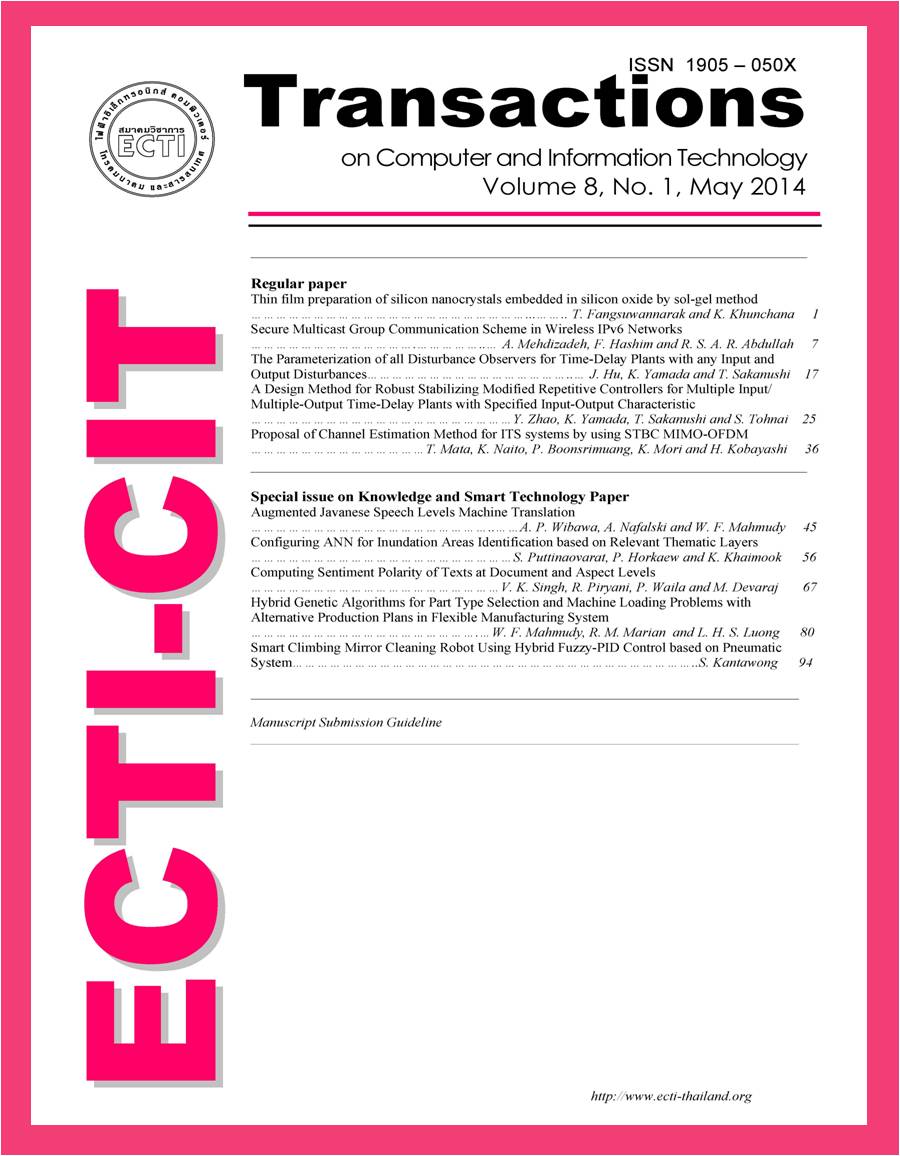Conguring ANN for Inundation Areas Identication based on Relevant Thematic Layers
Main Article Content
Abstract
Flooding is one of the major natural disasters that can cause not only disruptions to daily lives but also damages to our properties. The study of flood models to determine inundation areas has therefore become increasingly more important for decision makers and the authorities. Being readily accessible, the Artificial Neural Network (ANN) scheme was frequently adopted for hydrology and flood modeling. Most ANN techniques primarily take into account rainfall data and then predict runoff consequences. Despite convincing successes, they usually neglect other causative factors. This study thus focuses on configuring and improving generic ANN for inundation areas identification using various flood deterministic attributes. Accordingly, an ANN was developed using nine flood causative factors, derived from relevant thematic layers. They consist of flood plain in the past, height above sea level, water density, water blockage, sub basin areas, soil drainage capability, land uses and monthly rainfall, whose prognostic values were previously reported and assessed against the full scale census and comprehensive GIS survey with satisfying cogency. The guidelines and precautions suggested in this paper may be applied to various ubiquitous ANN based frameworks for flood forecasting and related risks assessment.


